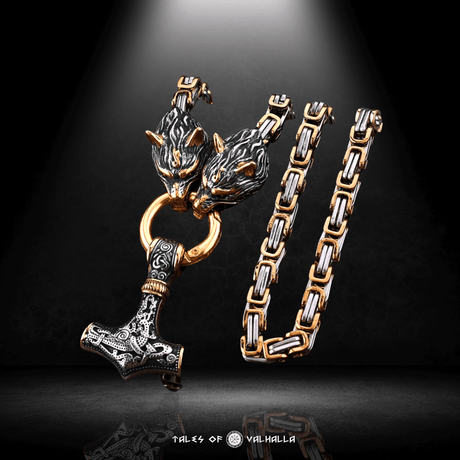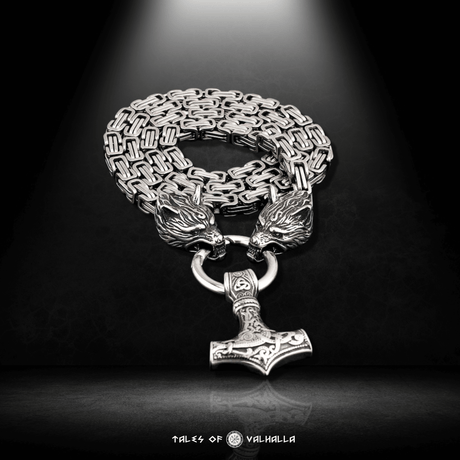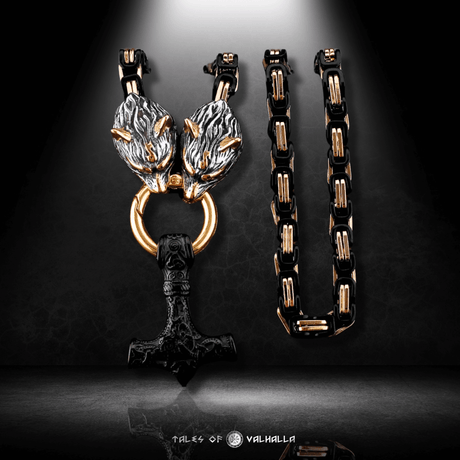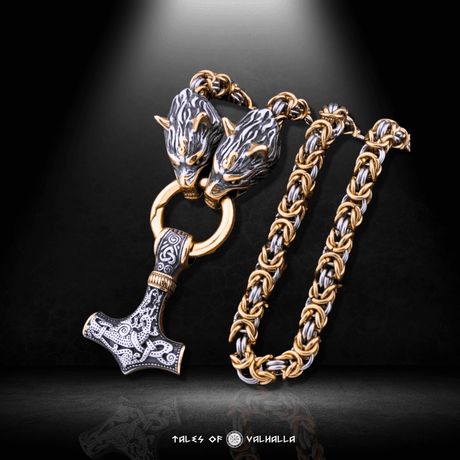It takes you back to the very roots of Viking culture when you are making an authentic Viking axe. Such weapons where wielded by the Viking warriors skillfully and with immense power. In this guide I will explain how to create a Viking axe that represents the era of the Vikings.

There is a story behind every process of making a viking axe. In this work, we shall analyze the kind of material that was used and the techniquesoleans employed by the smiths. You will discover how these tools have been significant in the historical development and shaping of cultures. We shall demystify them in order to disentangle the myths associated with them as well.The following are some of the notable legends.
Get ready for an exciting look at the viking axe. It's where history and today meet to create a unique and genuine piece of Viking heritage.
Deconstruction of the Myths Surrounding the Viking Axe
The viking axe represents the crusade and ruthlessness of the Norsemen. That is why for a long time, it has attracted the attention of fans of history. However, there are truths about these weapons that are real and not mere stories and legends. These truths reveal the true purpose of the viking axe in the context of viking society.
Historical Significance and Cultural Impact
The viking axe was more than a war tool. It was a key part of the Norse people's daily lives. They used it for battle, woodcutting, building, and even trading. The axe's design and making were full of symbols. They showed the Vikings' love for nature and their gods.
Separating Fact from Fiction
Over time, Viking warriors' stories have been made more exciting than they really were. It's important to know what's true about the viking axe. These axes weren't just for fighting; they were also vital for farming and home tasks. Knowing the real story of the viking axe helps us understand Viking culture better.
| Myth | Fact |
|---|---|
| Viking axes were only used for combat. | Viking axes had many uses, like cutting wood, building, and trading. |
| Viking axes were crude and simplistic in design. | Actually, viking axes were decorated with detailed Norse symbols, showing their importance. |
| Viking axes were primarily used for hacking and slashing. | Viking axes were made for different tasks, from precise cuts to heavy chopping. |
By clearing up myths about the viking axe, we learn more about its true value. These tools and weapons played a big part in Viking society. They show the lasting impact of the Nordic peoples.
Choosing the Right Materials for an Authentic Viking Axe
Making an viking axe takes a deep look at the materials Vikings used long ago. From picking the best metal to designing the viking axe handle, every part is key to making it feel real.
The authentic viking axe starts with its blade. Vikings used high-carbon steel for strength and toughness. They tempered and quenched the metal so the blade could handle battle and everyday tasks.
Choosing the right wood for the handle was also crucial. Vikings picked strong woods like ash, oak, and elm. These woods made the handle comfortable to hold and looked good with the axe.
- Ash: Strong, flexible, and good at absorbing shock, ash was perfect for viking axe handles.
- Oak: Durable and resistant to wear, oak was a go-to for authentic viking axes.
- Elm: Elm was strong and had a unique grain pattern, making it stand out in viking axe handle designs.
Viking blacksmiths also used leather, bone, and precious metals like silver or bronze for decoration. These added to the axe's look and made it more personal and meaningful.
| Material | Significance |
|---|---|
| High-carbon Steel | Provides strength and durability for the axe blade |
| Ash, Oak, Elm | Offers resilience and comfort for the axe handle |
| Leather, Bone, Precious Metals | Enhances the functionality and visual appeal of the axe |
By picking the right materials and using traditional Viking methods, today's craftsmen can make authentic viking axes. These axes honor the Norse culture and bring back the spirit of the Vikings.
Forging the Blade: Techniques from the Smiths of Old
In the world of medieval weapons, the real battle axe is a standout. Its unique design and deep history make it special. The types of axes medieval warriors used were more than tools. They were symbols of power, skill, and identity.
The making of these axes is thanks to the historical battle axe forging skills of Viking blacksmiths. These skills were passed down for generations.
Heating and Shaping the Metal
To make a Viking axe blade intended, one had to first heat and forge the metal. Blacksmith selected the finest quality iron or steel and then put in a furnace until it attained the right temperature for forging. Then they shaped it with hammers and anvils into the shape of the blade you see below in the picture.
Tempering and Quenching for Strength
After shaping, the blade needed tempering and quenching. This cooling process made the metal strong and durable. This method, perfected over time, made sure the real battle axe could handle combat well and stay sharp.
| Forging Technique | Purpose | Historical Significance |
|---|---|---|
| Heating and Shaping | Transforming the metal into the desired blade form | Showcasing the skill and craftsmanship of Viking blacksmiths |
| Tempering and Quenching | Enhancing the blade's strength and durability | Ensuring the real battle axe could withstand the rigors of combat |
"The real battle axe was not just a weapon, but a reflection of the blacksmith's artistry and the warrior's identity."
Viking blacksmiths' techniques for making the historical battle axe blade show their skill and dedication. These processes help us appreciate the craftsmanship and cultural value of these medieval weapons.
Crafting the Handle: A Functional and Symbolic Design
The handle of the viking axe was as important as the blade. Viking craftsmen picked the perfect wood for a handle that was strong and full of meaning.
Selecting the Perfect Wood
Selection of the appropriate variety of wood to be used in constructing the viking axe handle was therefore paramount. It indicated the empathy of the Vikings towards nature and how they valued the material they used. They employed hard woods such as ash, oak, and elm. These woods were powerful and held significance in bottom and top rung Viking culture.
Ash was associated with the World Tree, Yggdrasil. Oak was revered and associated with the god thor. To the Vikings, these woods made the axe to be stronger and mightier, and even protected it with a spiritual power.
| Wood Type | Characteristics | Symbolic Significance |
|---|---|---|
| Ash | Durable, resilient, and flexible | Associated with the World Tree, Yggdrasil |
| Oak | Sturdy, strong, and weather-resistant | Linked to the god Thor |
| Elm | Tough, flexible, and long-lasting | Represented the connection between the physical and spiritual world |
The Vikings chose the right wood for their axe handles. This made sure their axes were good for fighting and showed their deep cultural and spiritual beliefs.
The viking axe: More Than a Weapon
The viking axe was more than a battle tool. It was a key part of daily life for Viking warriors and their communities. It was vital for many tasks, showing the Vikings' cleverness and flexibility.
Vikings valued a tool that could do many jobs. The viking axe and shield were symbols of strength but also practical tools. They helped Vikings in tasks like cutting down trees, shaping wood, and butchering animals.
The viking axe also had deep cultural meaning. It was decorated with beautiful designs, showing the Vikings' love for art and their heritage. This axe symbolized the Viking warrior's skills, strength, and bond with their land.
"The viking axe was not just a weapon, but a tool that embodied the essence of Viking life – a blend of practicality, craftsmanship, and cultural identity."
Seeing the viking axe as more than a weapon helps us understand Viking life better. It shows how these tools were key to their society. The viking axe symbolized the Vikings' resourcefulness, adaptability, and respect for their heritage.
Decorative Elements and Personalization
The authentic viking axe was more than just a tool for fighting. It was a way for Viking blacksmiths to show off their skills. They added what weapons did the vikings use designs and symbols. This made each axe unique and eye-catching.
Incorporating Norse Symbolism and Imagery
The viking wooden axe often had designs from Norse myths and culture. Vikings thought these symbols gave the axe power and protection. Some common designs were:
- Runic inscriptions with names of Viking gods or heroes
- Images of animals like ravens, wolves, or bears, symbols of strength
- Knotwork patterns showing how everything in the Viking world was connected
- Patterns of spirals, waves, or circles, inspired by nature
These designs made the authentic viking axe not just pretty. They also gave it a deep cultural and spiritual meaning for its Viking owner.

"The Viking axe was a canvas for the artistry and symbolism of its makers, reflecting the rich cultural heritage of the Norse people."
Sharpening and Maintaining Your Viking Axe
Keeping your historical battle axe sharp and durable is key for its effectiveness in battle or daily tasks. The real battle axe, a symbol of Viking strength, needs careful handling to keep its edge sharp and last longer.
Proper Care for Longevity
Sharpening your medieval axe is crucial and should be done often. Here are steps to keep your types of axes medieval in great shape:
- Use a high-quality sharpening stone or file to hone the blade, keeping the original angle and shape.
- Avoid grinding too much or reshaping, as it can make the blade weak over time.
- Put a thin layer of oil on the blade after sharpening to stop rust and keep the metal strong.
- Keep your real battle axe in a dry, cool place to reduce moisture and temperature changes.
- Check the handle often for wear or damage, and replace it if needed for a good grip.
By doing these simple things, you can make your historical battle axe last longer and stay a trusted and strong tool for many years.
Remember, taking care of your types of axes medieval is not just practical, but also shows respect for their rich history and cultural importance.
Viking axe and shield: The Ultimate Viking Warrior's Gear
The viking axe and shield were key tools for Viking warriors. They were not just for fighting but also had deep meaning in Viking culture. Knowing how the viking axe and shield worked together shows us the skill and spirit of these famous Norsemen.
The viking axe was great for both attacking and defending. Its sharp blade could cut through armor and shields easily. With the Viking shield, the viking axe became a powerful team. Warriors could attack and protect themselves very well.
The Viking shield was made of wood and leather. It was more than just a shield; it was a sign of bravery and unity. Vikings formed a strong "shield wall" by linking their shields together. This made them hard to beat. The viking axe was perfect for striking from behind the shield wall, hitting enemies hard.
| Weapon | Tactical Advantage | Cultural Significance |
|---|---|---|
| viking axe | Formidable offensive weapon, versatile in both close-quarters combat and long-range attacks | Symbolic of strength, courage, and the Viking warrior ethos |
| Viking shield | Crucial defensive tool, allowing for the formation of the impenetrable "shield wall" | Emblematic of unity, protection, and the collective strength of the Viking community |
The viking axe and shield worked together amazingly well. They showed the tactical skill and bravery of the Vikings. With these weapons, Viking warriors could conquer the battlefield and become legends in history.
Conclusion
The viking axe is more than just a tool; it's a piece of history. It shows the strength and skill of the Norse people. These axes were key in battles and symbolized a warrior's strength.
This guide has taken us through the authentic viking axe's history. We've seen how these axes were made and their importance. We learned about the materials used and the process of making them.
Now, we must keep the viking axe's legacy alive. We should share its story and skills with others. By doing so, we keep the spirit of the Norse people alive and inspire others with their bravery and creativity.
FAQ
What is the historical significance and cultural impact of the viking axe?
The viking axe was key for Norse warriors, both in battle and daily life. It was used for fighting and everyday tasks like cutting wood. The axe's design showed deep cultural and spiritual values of the Norse people.
How can I separate fact from fiction when it comes to the viking axe?
It's key to be careful with stories about the viking axe. What you see in movies or books might not be true. By looking at real history and expert opinions, you can learn more about the axe's true role.
What materials were used to create an authentic viking axe?
Viking blacksmiths picked the best materials for their axes. The blade was made from strong iron or steel, shaped carefully for strength. The handle was often wood, chosen for its strength and meaning.
How did Viking blacksmiths forge the blade of a viking axe?
Forging the axe blade was a skilled task. Blacksmiths heated and shaped the metal with great care. They used special techniques to make the blade strong and sharp for battle.
What design elements were used in the handles of viking axes?
Viking axe handles were more than just for holding. They were decorated with symbols and designs from Norse culture. The choice of wood and design showed the axe's power and importance.
Was the viking axe used solely as a weapon?
No, the viking axe was versatile. It was used for many tasks, like cutting wood and hunting. Its use highlights its importance in Viking life and culture.
How were decorative elements and personalization used in viking axes?
Viking blacksmiths added symbols and designs to their axes. These added beauty and showed the axe's cultural significance. They made each axe unique and tied it to Norse culture.
How can I properly sharpen and maintain my viking axe?
Keeping your viking axe sharp and in good shape is important. Use the right tools and techniques to sharpen the blade. Clean and oil the axe to protect it from damage.
How did the viking axe and shield work together as a warrior's gear?
The viking axe and shield were perfect together, making up the Viking warrior's best gear. The shield protected, and the axe delivered strong blows in close combat. This gear helped Viking warriors fight well on the battlefield.






























































































